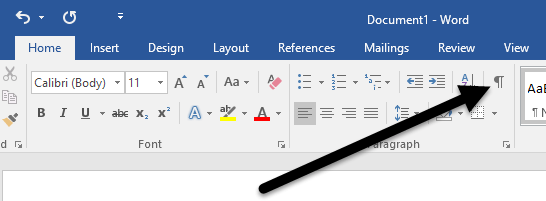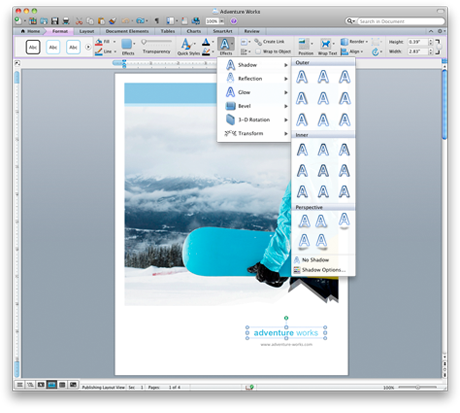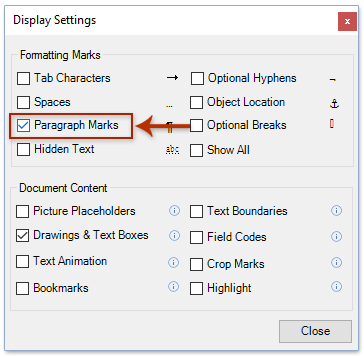

The selection will default to the format of the text you have selected (your reference), which is correct. Select a reference that you just formatted by dragging over it with your mouse

You’ll likely add / remove references in the process of editing, so it’s best to save the reference style for quick application in the future. That’s it! Your references should be in good shape. Click ok.Į) Set your font to Times New Roman, size 12. This is the amount of space to leave between paragraph blocks. And unlike the rest of your paper they should be single spaced.ĭo NOT add tabs to do this, there’s a better way:Ī) Select all your references by dragging over them with your mouse.ĭ) In Spacing ensure line-spacing is ‘Single’, and enter ‘16pt’ in the field labelled ‘after’. Harvard Educational Review, 33(1) 1-20.ĪPA requires that all lines other than the first be ‘hanging’, that means indenting them by 1/2 inch.
#WORD FOR MAC 2011 SHOW FORMATTING MARKS HOW TO#
How to create your TOA using a MAC and Word 2011.
#WORD FOR MAC 2011 SHOW FORMATTING MARKS PC#
Not every word is capitalized: “How to format references” Guide to formatting an appellate brief using MS Word on a PC or Mac.

Once the Preferences window opens, choose “View”: That option is available by clicking on Word > Preferences from the menus at the top of the program. To turn off showing those nonprinting characters, press that button again, and you’ll be back to the normal view.įinally, note that you can also control which nonprinting characters show all of the time, whether you’ve toggled this button on or not. In the most recent version of Word, you’ll just select the “Home” tab in the toolbar and then click the giant paragraph sign, which looks sort of like a backward “p.” Turning this view on and off is luckily very simple. (And if you’re not familiar with any of the symbols used for those nonprinting characters, check out the Wikipedia article on it.) So if I couldn’t figure out why my text was doing weird stuff after my last word typed there, it’s probably because of that page break! Good to know. Whenever you hit keys like Tab, Return, Spacebar, and so on, Word is actually sticking what it calls nonprinting characters in. For Mac: Go to 'Show Markup' on the review tab and uncheck 'Formatting'. About 2/3rds of the way down, youll see 'Formatting'. Seems pretty normal, right? But if I reveal the hidden formatting, here’s what we see: For Word: Go to the 'Review' ribbon and click on the arrow section and select 'Change tracking options'. Now, why would you want to see those characters, you may ask? Well, if the text within a document is behaving oddly, figuring out whether something behind the scenes is working against you is definitely the way to go, especially with how persnickety Word can be about moving elements around. Well, Microsoft Word can do this, too, and that’s what I’m gonna go over today. I’ve mentioned before that Pages has a way that you can show and hide what it dubs invisible characters, so if you need to see paragraph returns, tabs, spaces, and so on, it’s as simple as pressing Shift-Command-I or choosing View > Show Invisibles in that program.


 0 kommentar(er)
0 kommentar(er)
